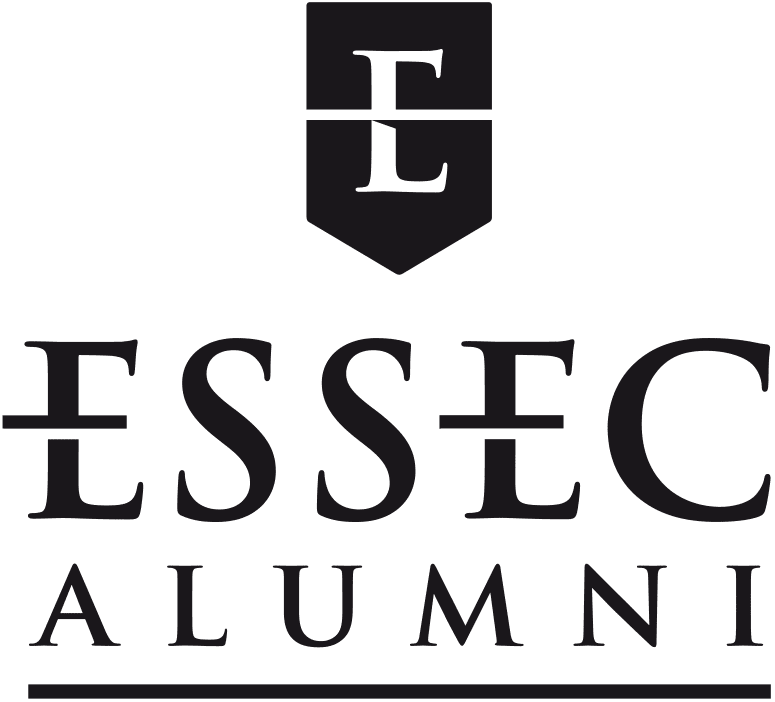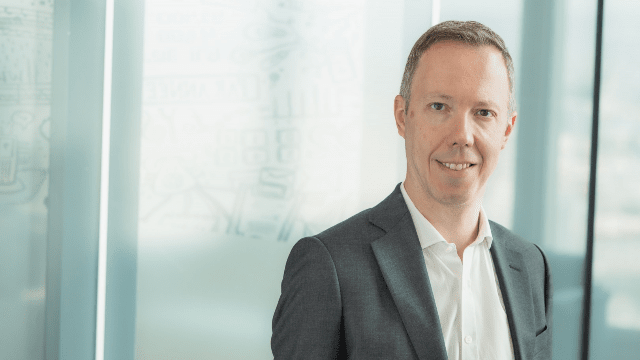Reflets Magazine #151 | Jérôme Fabry (E05): ‘What Will Become of Business Schools...and ESSEC?’
In Reflets Magazine #151, Jérôme Fabry (E05), partner at EY-Parthenon and head of ESSEC Alumni’s Public Affairs Club, analyses the profound changes business schools (including ESSEC) have undergone in the last decade, and foresees new upheavals to come. Here is a free online translation of the article… subscribe to get the next issues (in French)!
Reflets Magazine: How did you develop your expertise in higher education?
Jérôme Fabry: I began my career in strategic consulting before joining the State services, where I contributed in particular to reforms in primary and secondary education (assessment of the policy to fight school drop-out, the creation of the first digital department within the Ministry for National Education, and the reform of the priority education policy, etc.), followed by higher education (creation of the first French MOOC platform). I’m currently a partner at EY-Parthenon, where I guide public or private stakeholders and investors in their strategic and transformation plans, due diligence or new activities. More specifically, I carry out tasks for universities, major private education groups and graduate schools including ESSEC.
RM: The business school sector has seen some significant changes in recent years.
J. Fabry: First of all, enrolments in management training in France have seen an annual growth rate of 7% to 8% in the last decade, compared to 2% for all other sectors. This attractiveness, attributable to high professional insertion rates and the relevance of courses to young people’s ambitions, has led to three upheavals. Firstly, the offer has broadened with portfolios including post-high school programmes (Bachelor / BBA), masters (Grande École), or specialised masters and so on. Another joint development is the hybridisation of courses with the growth in dual diplomas and other partnerships to attract more targets and professions and foster trans-disciplinarity and skills diversification. Not to mention the development of comprehensive online programmes.
RM: What is the second upheaval?
J. Fabry: Broadening the offer leads to increased competition. As a result, students (and their parents) have become more demanding with regard to training quality and the experience a school can offer. This pressure on the return in investment is fuelled by the rise in tuition fees, a context in which 80% of professions in 2030 do not exist yet (source: Institute for the Future/Dell), and the fact that a graduate obtaining their degree today will change jobs some 5 to13 times throughout their career (source: Pôle Emploi [French National Employment Agency]). Schools are under close scrutiny; to keep their promises, they must develop not only their own ability to adapt but also that of their students.
RM: And the third upheaval?
J. Fabry: Economic models have undergone significant change. A diverse range of structures exist at present, from non-profit organisations to consular higher education institutions, universities and even commercial companies. All these training bodies have had to develop their own resources, however, in a context of scarce or even non-existent public funding and more particularly the subsidies granted by chambers of commerce.
RM: Which models prevail at present?
J. Fabry: This matter cannot be addressed without taking into account a French specificity, i.e. the coexistence of ‘Grande Ecole’ schools and universities. Elsewhere, business schools form part of larger university organisations offering a broad range of of study fields from humanities to science, and pooling certain investments (such as campus or digitalisation, etc.). Consequently, the best French institutions operate with budgets of less than €200M, whereas Harvard stands at $5.4 billion, Oxford at £2.8 billion, and ETH Zurich at 1.3 billion Swiss francs. This imbalance is worsened by the fact that our American competitors (and some European, such as IE University in Spain), receive generous private donations. At Harvard, tuition fees account for just 21% of the budget. It’s true that our schools receive growing support from their foundations, but they rely primarily on the income generated by their training activities.
RM: How do they overcome this limit?
J. Fabry: We are seeing a dramatic rise in ‘for profit’ models, but in teaching schools more often than research schools. That said, the non-profit models remain the world’s best. Be aware, this term does not mean that the schools in question do not generate profits. In fact, their profitability has risen in recent years. We’re nevertheless far behind the levels observed in other private higher education sectors. This money serves to fund the schools’ growth, not to reward shareholders or satisfy commercial interests.
RM: How have French schools increased their profitability?
J. Fabry: Primarily by targeting a critical size. After an initial wave of mergers (leading to brands such as Skema, Neoma or Kedge), followed by a stabilisation phase, we’re now seeing other alignments and the emergence of major private groups (generally backed by investment funds) such as Omnes Education or Galileo Global Education, the new core shareholder of EM Lyon, managed by our classmate Vanessa Diriart (M99) in France. French schools have also multiplied their income sources, with the creation of programmes, partnerships with companies via chairs in particular, collaboration with other institutions for research activities, or capital raising with alumni, etc.
RM: How about the rise in tuition fees?
J. Fabry: This is clearly a lever. However, other factors can explain the widespread rise in tuition fees, such as the notable growth in payroll (in both administrative and teaching bodies), a requisite to attracting talents in a context of fierce inter-school competition and the renewal of educational themes, or the investments made to lead the digital and environmental transition of campuses (e.g. ESSEC’s Campus 2023 project).
RM: What solutions have schools implemented to prevent tuition fees from becoming an obstacle to enrolment?
J. Fabry: Scholarships, bank loans, apprenticeship and work-study programmes, or working full-time while pursuing studies, etc. Schools go to great efforts to ensure funding does not become an obstacle. If our schools cannot yet boast satisfactory levels of social diversity, the fault unfortunately lies further upstream in our educational system.
RM: Are French schools ultimately a match for their international competitors?
J. Fabry: Our schools boast international visibility and a remarkable level of academic quality, especially given their resources. The Financial Times ranks no fewer than 21 French programmes, including ESSEC Grande Ecole, among the world’s 100 best Masters in Management.
RM: We cannot afford to rest on our laurels, however.
J. Fabry: True. Numerous challenges lie ahead, with increasingly offensive and attractive offers from Anglo-Saxon or Asian competitors; increasingly hybrid skills needs that benefit institutions belonging to a vaster ensemble, or innovative models emerging outside of rankings (such as the climate schools in the USA), etc. The role of the diploma itself could be challenged by other formats, such as certifications provided by companies, primarily the GAFAM.
RM: The offer therefore needs to adapt constantly to keep up with expectations. What do people study right now in business schools?
J. Fabry: Not surprisingly, among the subjects increasingly gaining ground, we can quote the digital revolution, and more particularly artificial intelligence, social and environmental issues and changes in the working world. Two subjects are also making their comeback: humanities and specifically geopolitical issues in a context of deglobalisation and the decline in international relations, and intercultural management, now that the COVID epidemic has passed.
RM: These themes logically feature in teachers’ research, the volume of which is rising. Why do schools invest so much in research activities?
J. Fabry: Firstly, because research nurtures teaching. Secondly, the aim of a research school is not just to educate, but to produce new knowledge and contribute to innovation and economic development. Thirdly, research weighs on rankings.
RM: Digital technology is another area of investment for schools. How has this affected the sector?
J. Fabry: Digital technology has led to the rise in flipped learning; in-person classes are increasingly designed to complement resources available online, and must provide an added value compared to remote courses. It also irrigates students services, in addition to faculties and administrations, by facilitating academic monitoring and the validation of acquisition. We’re seeing a growth in collaborations between schools and the EdTech sector around augmented reality, the metaverse, Web3, etc. Not to mention the development of reporting and support platforms for issues such as health, social isolation or violence.
RM: The past decade brought huge transformations. Can we expect more changes in the years to come?
J. Fabry: We’re undoubtedly experiencing an accelerated rate of change. Nothing can ever be taken for granted; we must reassess and readjust constantly. In short, schools must practice what they preach, i.e. innovate and guide change, and demonstrate leadership and responsibility.
Interview by Louis Armengaud Wurmser (E10), Content Manager at ESSEC Alumni
Translation of an article published in Reflets Magazine #151. Special offer: read the issue for free (in French).
Get the next issues (in French).

Comments0
Please log in to see or add a comment
Suggested Articles



